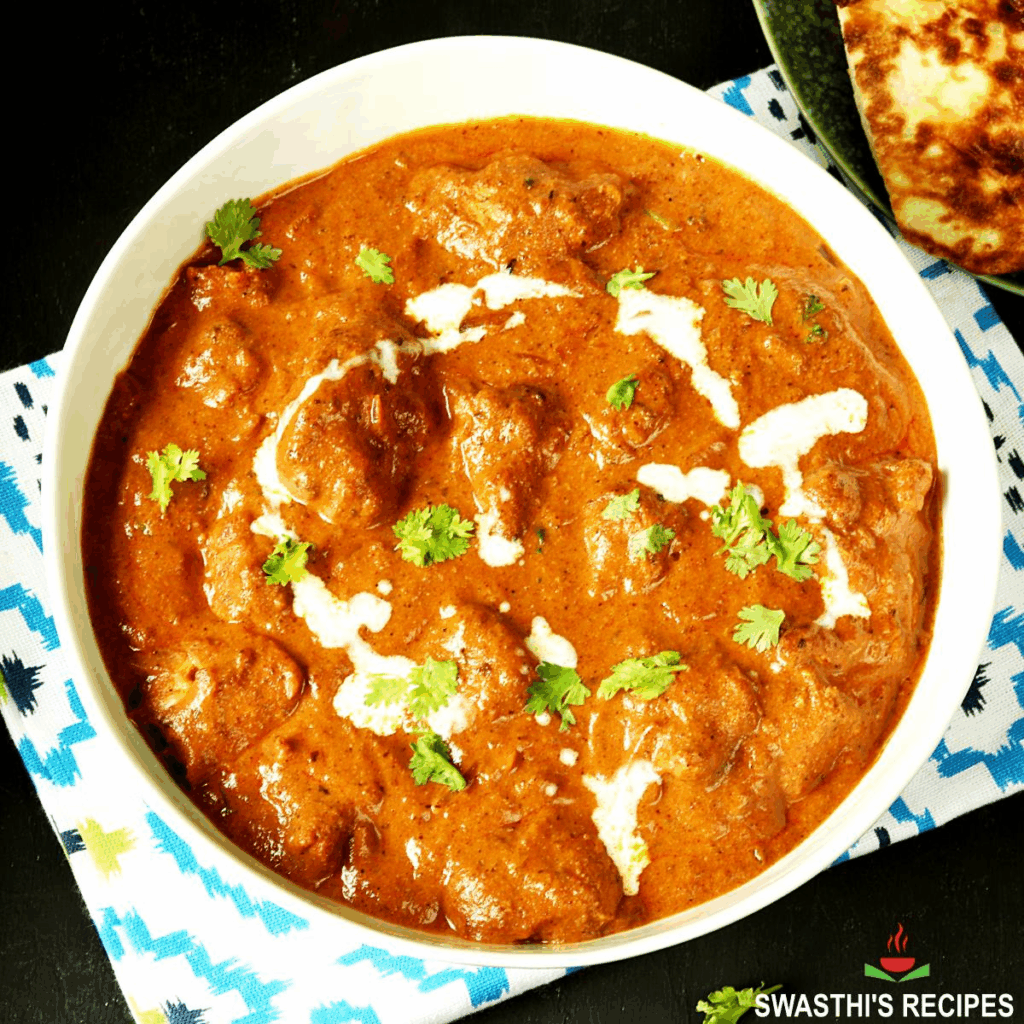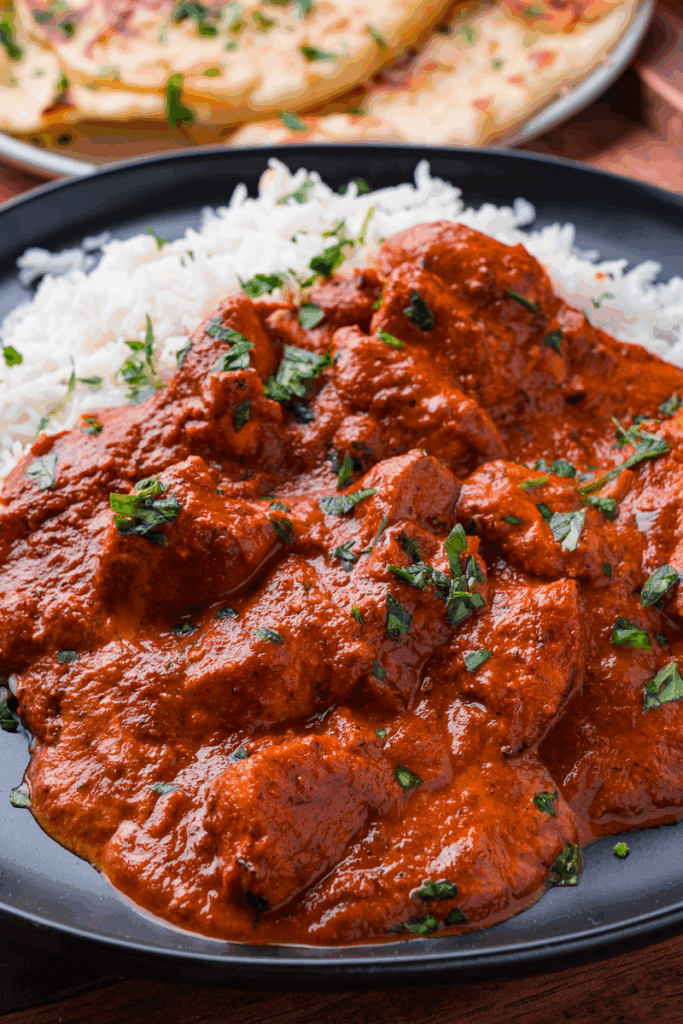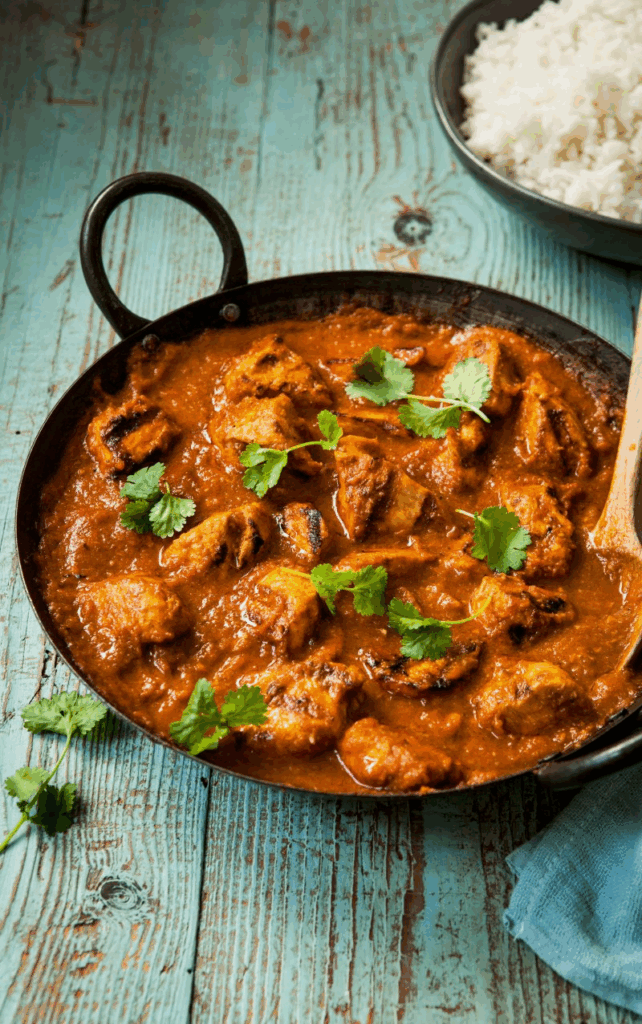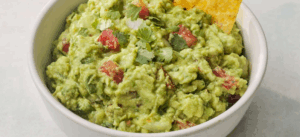Authentic Chicken Tikka Masala Recipe for Beginners: Step-by-Step Guide

As a professional chef who’s trained in both classical French cuisine and modern Indian fusion, one of the most rewarding dishes I teach newcomers is Chicken Tikka Masala. It may look intimidating with all the spices and marinades, but trust me — once you understand the flavor structure, it becomes second nature. This guide is designed not just to show you what to do, but to explain why things matter. Whether you’re cooking in a home kitchen, experimenting with a slow cooker, or trying to impress guests, you’ll get everything you need here — no jargon, just results.
- What Makes Chicken Tikka Masala So Special?
- Ingredients You’ll Need – and Why They Matter
- Marinade and Cooking Time Guide (Table Format)
- Making the Marinade: Building Flavor from the Base
- Grilling the Chicken: Getting That Signature Char
- Making the Masala Sauce: Layering with Patience
- Balancing Spices: The Chef’s Ratio Rule
- Ingredient Substitutions and Dietary Variations
- What to Serve with Chicken Tikka Masala: Sides that Complete the Dish
- Cooking Chicken Tikka Masala in the Oven, Microwave, or Slow Cooker
- Weeknight Timing Strategy: Making It Work on Busy Days
- Leftovers and Reuse Ideas: Don’t Waste a Drop
- Texture and Consistency: Getting It Silky, Not Soupy
- Common Mistakes Beginners Make – and How I Avoid Them
- Storage, Reheating, and Freezing Guide
- Final Plating Tips and Presentation Tricks
- FAQ – Your Chicken Tikka Masala Questions Answered

What Makes Chicken Tikka Masala So Special?
Chicken Tikka Masala is more than just a curry. It’s a layered dish where smoky marinated chicken meets a velvety tomato-cream sauce bursting with garam masala, cumin, and fenugreek. It’s a fusion of Mughlai-style marination and British-inspired curry house flavors. What I love most is the dual-cooking technique — grilling the chicken for char and then simmering it in the sauce — which creates rich contrasts in every bite.
This dish became iconic for a reason: it feels indulgent, but once you break it down, it’s perfectly doable at home. The secret? A good marinade, balanced spice ratios, and knowing when to add cream to finish.
Ingredients You’ll Need – and Why They Matter
Let’s break down what goes into making this dish, and more importantly, what each ingredient brings to the table:
- Chicken thighs (boneless, skinless): Juicy, flavorful, and forgiving. Breast dries out faster.
- Yogurt: Forms the base of the marinade. It tenderizes the meat and helps the spices stick.
- Garlic + Ginger: Fresh is non-negotiable. They build foundational heat and aroma.
- Garam Masala, Cumin, Turmeric, Paprika: Together, these create a warm, earthy backbone.
- Tomato purée or crushed tomatoes: Gives the sauce its signature tang and body.
- Heavy cream: Smoothes the finish and softens spice. You can sub with coconut cream for a dairy-free option.
- Kasuri methi (dried fenugreek): This adds that unmistakable restaurant-style aroma.
Optional upgrades: smoked paprika for depth, a pinch of sugar to balance acidity, and ghee instead of oil if you want richness.
Marinade and Cooking Time Guide (Table Format)
Here’s a helpful timing table to plan your cooking workflow depending on the method you choose:
| Cooking Method | Marination Time | Cook Time | Best Feature |
| Stovetop + Grill Pan | 2–8 hours | 25 mins | Best flavor balance, authentic char |
| Oven (broil mode) | 2–8 hours | 20 mins | Easy browning, hands-off approach |
| Slow Cooker | 2 hours min | 4–6 hrs | Tender meat, ideal for busy schedules |
| Microwave (hybrid) | 30 mins | 12–15 mins | Fastest method, needs flavor boosting |
As a chef, I often use the stovetop for searing and then finish the sauce in a heavy-bottomed saucepan. But if I know I’ve got a packed day ahead, that slow cooker method never lets me down.

Making the Marinade: Building Flavor from the Base
This is where the magic starts. I always combine full-fat yogurt with a good squeeze of lemon juice, fresh minced garlic and ginger, and a hefty dose of ground spices. The acid and enzymes in yogurt tenderize the chicken, while the spices infuse deep flavor.
To get it just right:
- Use non-metal bowls for marinating.
- Massage the marinade thoroughly into the chicken, coating every surface.
- Cover and refrigerate. Two hours is the bare minimum, but overnight is ideal.
Pro tip: Add a spoonful of mustard oil or ghee to your marinade — it adds another layer of complexity and helps with caramelization during cooking.
Grilling the Chicken: Getting That Signature Char
Once your chicken has soaked up all that flavor from the marinade, it’s time to get some heat going. In my kitchen, I usually use a cast iron grill pan or outdoor grill if the weather allows — but even a stovetop skillet will work. The goal here is to develop a nice sear, those deep golden-brown spots that give tikka its name and smokiness.
You don’t need to cook the chicken through at this point — you’re just looking for a quick char on each side. That caramelized crust locks in moisture and flavor. I lay the pieces down on high heat and let them sizzle without moving them around. After a couple of minutes, you’ll notice the edges getting crispy — that’s your cue to flip.
For oven users, the broil setting mimics a tandoor pretty well. Just place the chicken on a rack over a tray, let the heat blast it from above, and turn it once for even browning. And if you’re going the slow cooker route, I recommend giving the chicken a quick pan-sear before tossing it into the pot. It’s optional, but it makes a world of difference.
Making the Masala Sauce: Layering with Patience
While the chicken is resting, I move on to the sauce — the heart of this dish. I always start with ghee or neutral oil, warming it slowly in a heavy-bottomed pan. Then come the aromatics. First the chopped onions — I sauté them gently, letting them turn soft and golden, never rushing this part. Burnt onions can ruin the whole batch.
Once the onions are just right, I stir in finely minced garlic and ginger. The kitchen immediately fills with that familiar tikka aroma. Then, I add the spices — not all at once, but gradually, so the oil absorbs and opens them up. Garam masala, cumin, coriander, turmeric — these are your building blocks. I give them a moment to bloom before stirring in the tomato purée.
At this stage, the sauce will look a bit thick and harsh. That’s normal. I let it simmer gently until it darkens slightly and the oil starts separating. That’s when I pour in some heavy cream, slowly and steadily, stirring to watch the sauce transform into its signature silky orange.
Balancing Spices: The Chef’s Ratio Rule
Spice ratios in tikka masala are not one-size-fits-all. I’ve adjusted mine over the years to be bold but not overpowering, warm but not bitter. Too much turmeric, and it gets metallic. Too little cumin, and it feels flat. Here’s how I explain it to my sous chefs — you’re painting with spices, not dumping them in.
Garam masala is your foundation. Cumin and coriander add earthiness. Paprika brings color and mild sweetness. A pinch of cayenne is optional but welcome if you like heat. I almost always finish with crushed kasuri methi — dried fenugreek leaves — for that elusive restaurant finish. If you’ve ever wondered what makes a curry taste “like takeout,” that’s the ingredient.
Once the sauce is ready, I nestle the charred chicken back in and let it all simmer together. The sauce thickens, the flavors marry, and after ten minutes, it’s ready to serve.

Ingredient Substitutions and Dietary Variations
Not everyone keeps heavy cream or ghee on hand, and that’s okay. In my experience, you can swap a few things without sacrificing flavor. For a dairy-free version, coconut cream works beautifully — it adds a gentle sweetness that plays nicely with the heat. Almond or oat-based creams can be used too, though they tend to be thinner, so reduce the sauce a little longer.
If you’re avoiding tomatoes, you can use roasted red pepper purée or even a mild curry base made from onions and stock. It won’t be classic tikka masala, but it will still be delicious.
For vegetarians, paneer or roasted cauliflower makes an excellent stand-in for chicken. And for those watching calories, Greek yogurt in the sauce (added at the very end and not boiled) can lighten things up while keeping it creamy.
What to Serve with Chicken Tikka Masala: Sides that Complete the Dish
When I serve Chicken Tikka Masala — whether it’s a family dinner or a client tasting — I always think about balance. You’ve got this rich, creamy, spiced dish, so what you serve with it needs to either absorb or contrast.
Fluffy basmati rice is the gold standard. I rinse it thoroughly, toast it lightly in a bit of ghee, and then steam it with just a touch of salt. The grains should stay separate, almost bouncing off the plate.
But some nights, I go with garlic naan — soft, blistered flatbread brushed with butter and minced garlic. I sometimes make it from scratch, sometimes grab a good store-bought version and warm it in the oven right before plating. Either way, it’s perfect for scooping.
If you want something brighter, a cucumber raita or kachumber salad (a mix of tomatoes, cucumber, red onion, lemon juice, and salt) brings a refreshing crunch and contrast.
Cooking Chicken Tikka Masala in the Oven, Microwave, or Slow Cooker
Not everyone has time or space for stovetop cooking — and that’s totally fine. Over the years, I’ve tested this recipe in every appliance you can imagine, and each has its perks.
The oven method is great if you’re multitasking. I broil the marinated chicken at high heat (around 475°F or 245°C) for 15–20 minutes. While it chars beautifully, you’ll still need to finish the sauce on the stove or in a pan. I call this my “hands-free flavor” trick.
In the microwave, you can actually cheat a bit. Microwave the chicken (covered) for 10 minutes, then brown it quickly in a pan. For the sauce, I mix everything in a microwave-safe bowl and cook in 2-minute bursts, stirring often. It’s fast and not bad at all — just make sure to use a microwave with power above 1000W for best results.
The slow cooker, though, is a personal favorite. I sear the chicken first, then layer sauce ingredients into the crock. I cook it on low for 5–6 hours, or high for 3–4. Add cream only at the end. The result? Tender, fall-apart pieces in a deeply infused sauce that tastes like it cooked all day — because it did.

Weeknight Timing Strategy: Making It Work on Busy Days
Most of my clients — and even students — tell me the same thing: “I’d cook more if I had the time.” The good news is, with a little prep, Chicken Tikka Masala becomes totally doable on a weeknight.
Here’s what I do at home: the night before, I marinate the chicken and store it in the fridge. I also pre-chop onions and measure out the spice mix into a small container. That alone saves about 20 minutes.
The next evening, I start cooking as soon as I get home. I sear the chicken, cook the sauce while it rests, and combine them right before dinner. From fridge to table, it takes under 45 minutes — even less if I’ve pre-cooked rice or naan in the freezer.
For ultra-busy weeks, I cook a full batch on Sunday and portion it into containers. It actually tastes better after a day or two, and it freezes beautifully. Just skip the cream if freezing — add it fresh after reheating for the best texture.
Leftovers and Reuse Ideas: Don’t Waste a Drop
Let me tell you — leftover Chicken Tikka Masala is a gift. The flavors deepen overnight, and there are so many ways to reuse it beyond just reheating.
Sometimes I shred the leftover chicken and roll it into warm naan wraps with pickled onions and herbs — it’s like an Indian-style burrito. Other times, I turn it into a spiced rice bake by layering it over rice in a baking dish, sprinkling a little shredded cheese on top, and crisping it in the oven.
One of my go-to moves? Tikka masala pizza. I use naan or pita as the base, spread the thickened sauce over it, add leftover chicken, red onions, and a bit of mozzarella. Ten minutes in the oven and it’s comfort food with a twist.
You can also toss it into soups, spoon it over baked potatoes, or even use it as a base for spiced pasta sauce. It’s versatile, bold, and never boring.
Texture and Consistency: Getting It Silky, Not Soupy
One of the hallmarks of a good Chicken Tikka Masala is its texture. I always aim for a sauce that clings — not one that runs across the plate like soup. Achieving this isn’t about using cornstarch or thickeners; it’s about reducing at the right pace.
After adding the tomato purée and cream, I keep the sauce at a low simmer, uncovered. It thickens naturally as the water content evaporates. Stirring often, especially along the bottom of the pan, helps avoid burning while giving the sauce that rich, velvety texture.
If your sauce turns out too thin, just give it more time. If it’s too thick, a splash of warm water or stock brings it back. And remember: sauce continues to thicken as it cools, so finish just slightly looser than you want on the plate.
Common Mistakes Beginners Make – and How I Avoid Them
Having taught dozens of students this dish, I’ve noticed the same few pitfalls come up again and again. Let me walk you through what to watch out for.
The biggest one? Rushing the marinade. Two hours is an absolute minimum. Anything less, and you’re just coating the meat, not flavoring it. Overnight is ideal.
Another one: adding dairy too early. Cream or yogurt added when the sauce is still aggressively simmering will split — it’ll look grainy and lose its smoothness. I always turn the heat to low before adding any dairy.
And please, don’t skip searing the chicken. Whether you’re grilling, broiling, or pan-frying, that initial browning isn’t just for looks — it creates flavor depth you won’t get by poaching raw meat in sauce.
Finally, overloading the sauce with spice might sound bold, but it leads to bitterness. I’ve made that mistake in my early years. Less is more — then taste and adjust.
Storage, Reheating, and Freezing Guide
| Storage Method | Duration | Tips for Best Quality |
| Fridge (cooked) | 3–4 days | Store in airtight container; reheat gently over low heat |
| Freezer (no cream) | Up to 3 months | Freeze without cream; add fresh cream after reheating |
| Microwave Reheat | 3–5 minutes | Stir halfway through, cover loosely |
| Stovetop Reheat | 10 minutes | Add splash of water or cream while heating slowly |
In my kitchen, I always freeze in small batches. That way I can defrost only what I need. I’ve even brought frozen tikka masala to camping trips — it heats up beautifully over a portable burner.
Final Plating Tips and Presentation Tricks
Here’s where the chef in me takes over. You’ve made a killer tikka masala — now let’s plate it like you’re at a restaurant.
I prefer wide, shallow bowls. I start with a mound of steamed basmati rice in the center, then spoon the tikka masala over and around, letting some of the sauce pool under the rice. A drizzle of cream or yogurt swirled on top adds contrast and elegance.
If I’m serving guests, I’ll toss in a few sprigs of cilantro, maybe a lime wedge on the side, and a sprinkle of paprika for color. Warm naan folded in quarters and stacked nearby makes it irresistible.
Even at home, I believe in plating with intention. It elevates the experience — and it makes the first bite that much more satisfying.
FAQ – Your Chicken Tikka Masala Questions Answered
Can I use chicken breast instead of thighs?
From my own experience, you can, but I usually advise against it for beginners. Breast meat cooks faster and dries out if you’re not careful. Thighs give you more margin for error and stay juicy even if slightly overcooked.
Is it necessary to marinate the chicken overnight?
I’ve tried shorter marinating times many times, and honestly — overnight makes a huge difference. That said, even two hours can do the trick if you’re in a hurry, especially if you massage the marinade well into the meat.
How spicy is this dish?
That depends on your spice blend. In my base recipe, the heat is medium and balanced. I sometimes add a pinch of cayenne or a fresh chili when cooking for heat lovers. But on average, it’s warmly spiced rather than hot.
Can I make it dairy-free?
Yes, I’ve done this several times for clients. I usually substitute coconut cream for dairy. It gives a slightly sweet undertone, but it still works beautifully. Just make sure not to boil the coconut cream — it can split like dairy if overheated.
What if I don’t have all the spices?
Don’t worry. I always tell beginners: start with garam masala, cumin, and paprika. You’ll still get great flavor. As you build your pantry, add turmeric, coriander, and fenugreek to get closer to that restaurant profile.
Can I cook the chicken directly in the sauce without grilling it first?
I’ve tested that method when short on time — and while it technically works, the flavor suffers. That grilled or seared layer adds smoky complexity. If you skip it, the chicken tastes more like stew meat than tikka.
What’s the best way to reheat leftovers?
From what I’ve tried, reheating on the stovetop over low heat works best. Just add a little water or cream to loosen the sauce. Microwave works too, but stir often and cover to avoid drying out the top layer.
Can I freeze Chicken Tikka Masala?
Absolutely — I freeze it all the time for meal prep. Just skip the cream before freezing. Add fresh cream after thawing and reheating for a smoother finish.
What sides go best with it?
For balance, I always recommend basmati rice and garlic naan. But I’ve also served it with lemon couscous, roasted veggies, or even baked sweet potatoes. It’s flexible and plays well with both traditional and creative sides.
What’s the difference between butter chicken and tikka masala?
I get asked this a lot. Butter chicken is usually creamier, sweeter, and milder, with less spice layering. Tikka masala has a bolder tomato base and more pronounced heat and smokiness — especially when the chicken is grilled.
Can I make this in a slow cooker from start to finish?
I’ve done this a few times when prepping for events. It works if you sear the chicken first, then add all ingredients (except cream) to the slow cooker. Cook on low for 5–6 hours, then stir in cream at the end. The flavor is more mellow but still rich.
Is store-bought tikka masala sauce a good shortcut?
I’ve tested plenty of them. Some are okay in a pinch, but most taste flat or overly salty. If you must use one, I recommend enhancing it with fresh garlic, ginger, and a splash of cream to round it out.
How do I avoid the sauce splitting or curdling?
This used to happen to me early on, especially when I rushed. The key is to lower the heat before adding cream or yogurt. Also, stir gently and don’t let the sauce boil after the dairy goes in.
Can I double the recipe easily?
Yes — I double it often for events or meal prep. Just make sure your pan or pot is large enough, so the chicken isn’t crowded (otherwise it’ll steam). Also, adjust salt and spice gradually — don’t just double blindly.
Why does my dish taste too acidic or metallic?
That usually comes from the tomatoes. I’ve found that a small pinch of sugar — or better yet, a splash of cream — balances things out. Also, don’t add too much turmeric, as it can accentuate the bitterness.




Post Comment